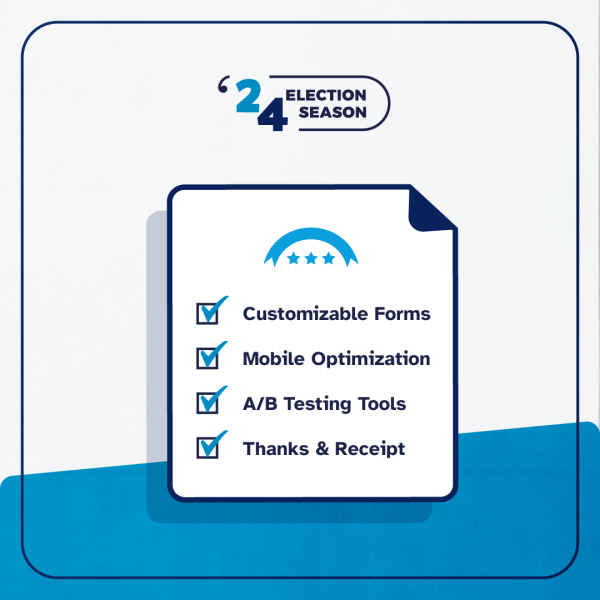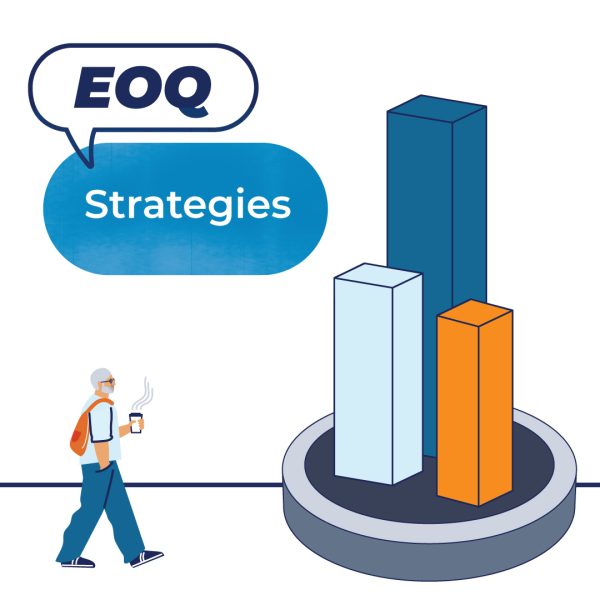Whether you’re running for city council or for your local school board, ActBlue’s digital fundraising tools make it possible for more grassroots candidates to run and win. Now that you’ve announced your race and gotten your ActBlue account up and running, it’s time to get online!
Establishing a digital presence is one of the most important first steps to launching a successful grassroots fundraising program. One of the first ways your supporters will engage with you is by searching for your name, so make it easy for them to learn more about you, know where to go for trusted information, and get engaged with your work. You don’t need a whole team of people running your digital operations – most campaigns just need a website, a Facebook page, and an email list to communicate with supporters and recruit even more!
Here are some of our low lift, high impact tips to get started on social media:
Creating a profile is an easy way for folks to learn more about you and engage with your movement. Even if you’re not a big fan of social media personally, it can be a powerful tool that allows you to communicate directly with your supporters and hear what they have to say. You don’t have to become a TikTok influencer overnight! Start by making the most of the time and resources you have by creating content that reaches the folks who can vote for you.
- Each platform has different audiences, so look to your target voters to help determine which social media channels you should invest time and energy into. There are a lot of resources to help you learn about who you will find on different platforms, like this resource from the National Democratic Training Committee, their social media course, or this research from the Pew Research Center.
- If you still aren’t sure where to begin, Facebook has the most users of any social media platform, so we recommend starting there. Follow Facebook’s step-by-step instructions: Be sure to select “Community or Public Figure” and add “Political candidate” as a category so your page is set up correctly.
- We also recommend creating a Twitter account if you can, since political discourse often centers there. Getting verified will add credibility to your account, so we recommend starting that process as soon as possible.
Here are our top tips for creating an effective social media profile:
- Choose a handle or username that is consistent and evergreen. Include your name but not the year, in case you run for reelection or for a different office. In the description, clearly state what office you’re running for, the year, and a tagline if you have one.
- Make sure you upload both a profile photo and a banner photo. You can use your campaign logo, a high-resolution headshot of you, or even a photo of you in action: making a speech, doing volunteer work, or meeting people in the community!
- Always include a URL to your website or ActBlue contribution form and make sure they’re displayed in a prominent, easy-to-find place. Prompt people to act, whether you’re asking them to check out your policy positions on your website, donate to your campaign, or sign up for your email list.

Getting started with a content plan
Now that you’re online, it’s time to post! Social media is a great way to show people who you are and sets a foundation for a two-way dialogue that can continue even after you’re (hopefully!) elected.
- Try listening to your followers, asking questions, and being courteous. You can be a bit more casual in tone than at a press conference or if you are giving a formal speech.
- Speak as though you’re talking to a friend, and maybe even go live to share what you’re up to day-to-day.
- Build up your social media content calendar by posting a few times a week, then once a day, and then as much as possible in the weeks leading up to the election. Because there is so much competition online, the more you post, the more likely you are to show up in folks’ feeds and empower them to engage.
- When you want folks to take some sort of action, be sure to include a clear ask and theory of change. Tell folks why they should take the time to engage with your campaign, and how their actions will make a difference in their community.
- Your posts are competing with the entire rest of the internet, as well as anything else that might be happening in your supporters’ lives. Ask yourself: if you weren’t part of the campaign, would this be a post you would pay attention to?
- If you have capacity, making use of analytics tools can help you try out different types of posts, review past posts’ performance, and make adjustments accordingly!
- Remember: Everything you say online can potentially be permanent, so be mindful and follow some of these best practices to make sure your account reflects well on you.
Social media strategy can be as easy or as complex as your team has the capacity for, and you don’t have to spend a ton of time on digital to be successful. Plus, the people who follow you on social media are more likely to support your campaign, and may be willing to help out by reaching out to their friends and family, recruiting volunteers, and even doing some peer-to-peer fundraising!
We know these tips just scratch the surface, but having even the most basic social media presence can go a long way in building trust with potential voters. There is a wealth of resources online, if and when you’re ready to dive deeper. For more on how you can incorporate ActBlue’s fundraising tools into your digital strategy, we recommend exploring our blog or scheduling a call with our team of digital fundraising experts!



